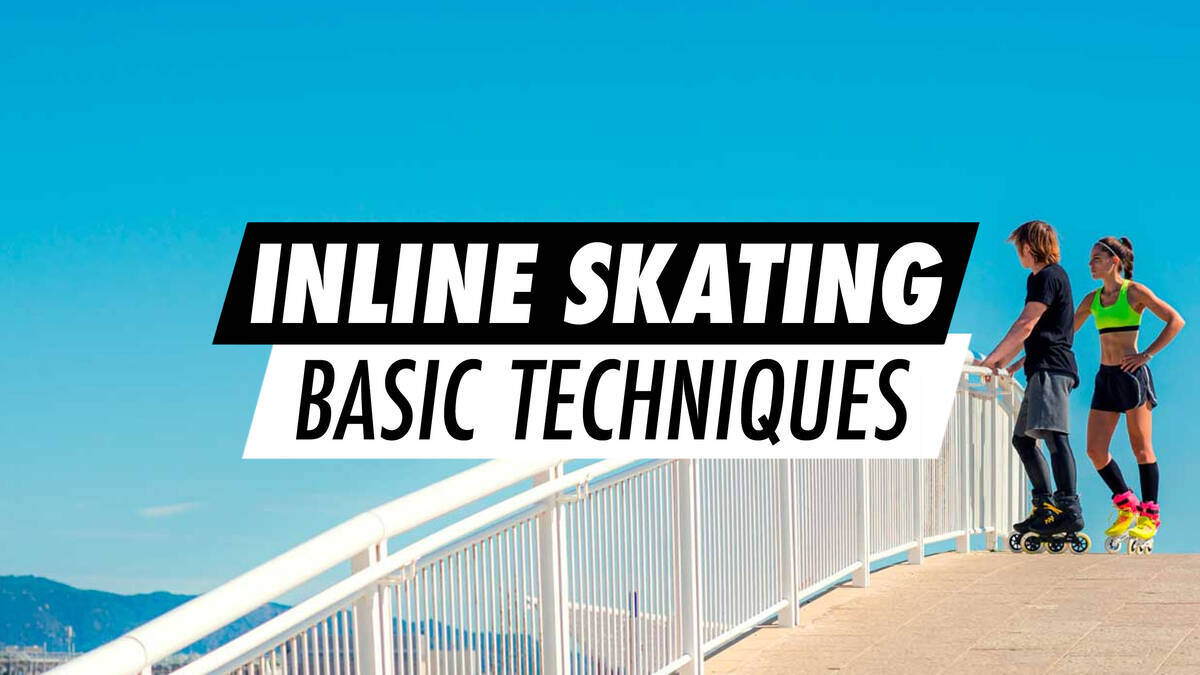Inline Skating - Fundamental Skills

Mastering inline skating involves cultivating a stable stance on the skates, understanding how to stop, execute smooth turns, and learning to fall safely. This guide will equip you with all the necessary knowledge about inline skating techniques if you're just starting out.
Inline skating is suitable for everyone, regardless of size or age. All you need are a pair of inline skates, some protective gear, and a smooth surface free from traffic, and you are ready to begin practising. Although the learning curve may be challenging initially, noticeable progress will come after only a few hours of practice, so keep going!
Overview
Achieving the Correct Stance on Inline Skates
To properly stand on your inline skates, ensure you bend your knees. This brings you closer to the ground, thereby enhancing your balance.
Your feet should remain parallel and point directly forward, not turning inward or outward.
With knees bent, feet parallel, and a slight forward lean in your upper body, you should attain a stable and balanced stance.
Watch our tutorial video: How to Skate on Inline Skates:
Methods to Stop on Inline Skates
Stopping on inline skates can be achieved by using either the brake pad or the T-stop method.
Utilising the Brake Pad on Inline Skates
To employ the brake pad, push the skate with the pad forward and raise your toes so that the brake pad makes contact with the ground, thereby slowing your speed. The brake pad allows you to smoothly adjust your rolling speed or come to a complete halt. For beginners, familiarising yourself with the brake pad is advised to maintain control.
T-Stop Method on Inline Skates
The T-stop method requires placing one foot behind you and dragging the wheels perpendicular to your other foot, forming a T. Continue dragging until a full stop is achieved. Performing a T-stop necessitates balancing on one foot while moving.
T-stops let you halt using the wheels without needing a brake pad. This is advantageous as brake pads can sometimes obstruct. For newcomers, getting used to the T-stop is beneficial as it enhances control over your inline skating activities.
Both methods are demonstrated in our video tutorial: How to Stop on Inline Skates:
Executing Turns on Inline Skates
While turning on inline skates, maintain a slight forward lean with knees bent. To turn left, move your left foot slightly forward; do the reverse for a right turn. Shift your body weight towards the turn direction, leaning your upper body into the turn. Looking in the turn direction can be extremely helpful.
Attending to your turning technique will help avoid common beginner errors. It also sets a foundation for advanced techniques like cross-over turns, which you'll learn as you advance.
Safely Falling on Inline Skates
Falling forward is better as it allows more control and prevents your head or tailbone from hitting the ground.
If you feel you’re losing balance, do the following:
- Crouch and lean forward—being low minimises fall impact, and you might even regain control.
- Let your protection gear absorb the fall—using knee, elbow, or wrist pads to take the impact will protect you. In case of falling at high speeds, slide on your protectors to avoid grazes.
Employing these techniques reduces the chance of injuries that could hinder your progress with inline skating.
Selecting the Best Inline Skates for Learning
Whether you're new or seasoned, it's crucial to select inline skates that fit snugly and comfortably. Skates for learners should include a heel brake and provide excellent ankle support. The wheels should be soft (76A - 84A) and not oversized—84 mm or smaller for adults with large feet, and for children, a suitable size is under 70 mm.
For more details, check out our buying guides:
